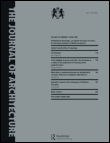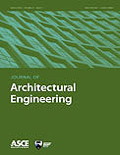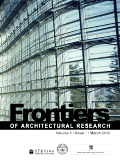
Architect
metrics 2024
Advancing Scholarly Dialogue in Design and Architecture
Introduction
Architect is a publication dedicated to the diverse and evolving field of architecture and design, presented by the reputable HANLEY WOOD, LLC. Since its inception in 1975, the journal has traversed critical periods in architecture, offering valuable insights and research that cater to both practitioners and academics alike. The journal holds a Q4 ranking in both Architecture and Visual Arts and Performing Arts, indicating its niche presence within the crowded scholarly landscape. Despite its recent rankings within the Scopus, where it lies in the lower percentiles of the architecture category, the Architect journal provides platforms for innovative discussions and explorations in design, helping to shape the discourse in the architectural community. While the journal is currently accessible via traditional subscription models, it remains a critical resource for those seeking to bridge practice and theory in architecture. As it continues to evolve beyond its historical publication periods, Architect aims to nurture a rich environment for professional growth, scholarship, and dialogue among researchers, designers, and students engaged in the dynamic world of architecture.
Metrics 2024
 0.10
0.10 0.20
0.20 0.10
0.10 4
4Metrics History
Rank 2024
Scopus
JCI (Web Of Science)
Quartile History
Similar Journals

Journal of Architecture
Transforming ideas into impactful architectural narratives.Journal of Architecture, published by ROUTLEDGE JOURNALS, TAYLOR & FRANCIS LTD, stands as a pivotal platform for scholarly discourse in the ever-evolving field of architecture. Established in 1996, this esteemed journal boasts an impressive impact factor, categorized as Q2 in Architecture and Q1 in Visual Arts and Performing Arts, reflecting its significant contribution to both disciplines. With a robust Scopus ranking positioning it in the 85th percentile among Visual Arts and Performing Arts and the 57th percentile within Engineering Architecture, the journal serves as an essential resource for researchers, professionals, and students alike. The Journal of Architecture features innovative research and thoughtful analysis that shape contemporary architectural practices and theories, encouraging interdisciplinary dialogue. Engaging with this journal allows readers to stay abreast of critical advancements and emerging trends, fostering a deeper understanding of architecture's role in societal transformation.

Architecture_MPS
Fostering Interdisciplinary Dialogues in ArchitectureArchitecture_MPS is a premier open-access journal published by UCL PRESS, dedicated to exploring the interconnections between architecture, urbanism, and the broader spectrum of social and cultural dynamics. Launched in 2012, this journal stands as a crucial platform for researchers, practitioners, and students alike, facilitating the exchange of innovative ideas and comprehensive scholarship in the field. With its commitment to open access, Architecture_MPS significantly enhances the visibility and accessibility of research, fostering a collaborative environment for academic discourse. The journal covers a diverse array of topics, including theoretical frameworks, policy analysis, and practical case studies, making it an invaluable resource for those engaged in the study and practice of architecture and allied disciplines. As a leading source of contemporary research, Architecture_MPS aims to bridge gaps between academia and practice, encouraging interdisciplinary dialogues that shape the future of architecture and urban studies.

ARCHITECTURAL DESIGN
Innovating Design Through Research and DiscourseARCHITECTURAL DESIGN, a leading journal published by Wiley Periodicals, Inc., serves as a vital platform for discourse in the fields of architecture and visual arts. With an ISSN of 0003-8504 and an E-ISSN of 1554-2769, this esteemed publication offers comprehensive insights into contemporary design practices and emerging architectural theories. Established in the United States and continuously evolving from 2002 to 2024, the journal has secured a prominent position with a Q3 status in Architecture and an impressive Q1 ranking in Visual Arts and Performing Arts as of 2023. Its Scopus rankings further affirm its relevance, with a percentile ranking of 82nd in the Visual Arts category. Although it does not currently offer Open Access options, the journal remains dedicated to disseminating high-caliber research and innovative design strategies that engage a diverse readership of researchers, professionals, and students alike. The contributions published within its pages are instrumental in shaping the discourse around architecture, making ARCHITECTURAL DESIGN an indispensable resource for anyone passionate about the built environment.

ACE-Architecture City and Environment
Innovating for a Greener, More Inclusive Urban LandscapeACE-Architecture City and Environment, published by Universitat Politècnica de Catalunya in Spain, serves as an essential repository for innovative research and insights that intersect the fields of architecture, urban studies, and environmental planning. Since its establishment as an Open Access journal in 2006, it has facilitated widespread accessibility to scholarly work, fostering a collaborative and inclusive academic community. The journal has consistently maintained a prominent standing within its field, reflected in its 2023 Quartile rankings—, Q3 in Geography, Planning and Development, and Q2 in Urban Studies. With a publication horizon extending from 2011 to 2024 and an impressive Scopus ranking among peers, it offers a comprehensive platform for researchers to disseminate their findings and engage with contemporary challenges in urban environments. ACE is pivotal for professionals and students alike, striving to shape the future of sustainable architecture and urban planning through rigorous scholarship.

Techne-Journal of Technology for Architecture and Environment
Bridging Innovation and Sustainability in ArchitectureTechne - Journal of Technology for Architecture and Environment, published by FIRENZE UNIV PRESS, is an important academic platform that bridges the gap between technology and architecture while addressing the evolving environmental challenges of our time. Established in 2015, this journal provides a forum for innovative research and discussions that critically examine the intersections of architecture, urban studies, and construction engineering. With an impact factor indicative of growing recognition in its field, Techne encompasses a broad spectrum of studies, marking its presence in the Q3 and Q4 quartiles across various categories, including Architecture, Building and Construction, Education, and Health (Social Science). The journal is indexed in Scopus with varying ranks, showcasing its increasing relevance and influence among contemporary literature. Although it operates under a non-open access model, the journal ensures that its scholarly contributions are accessible through institutional connections, making it a vital resource for researchers, professionals, and students seeking to advance their knowledge on the integration of technology in shaping sustainable architectural practices.

International Journal of Built Environment and Sustainability
Fostering Knowledge for Sustainable Built EnvironmentsInternational Journal of Built Environment and Sustainability, published by PENERBIT UTM PRESS, serves as a pivotal platform for the dissemination of research in the fields of architecture, urban planning, and sustainable development. With an E-ISSN of 2289-8948 and having embraced Open Access since 2014, this journal ensures that critical findings in built environment research are accessible to a global audience, fostering innovation and collaboration among researchers, professionals, and students. Although the H-index and specific scope are currently not detailed, the journal's commitment to advancing sustainable practices in the built environment makes it an invaluable resource for those dedicated to tackling the pressing challenges of sustainability in our communities. As part of its mission, the journal prioritizes high-quality, peer-reviewed articles that contribute to both academic theory and practical applications, solidifying its role in shaping the future of our built environments.

Journal of Architectural Engineering
Transforming Ideas into Architectural RealitiesThe Journal of Architectural Engineering, published by the ASCE (American Society of Civil Engineers), stands as a pivotal resource in the interdisciplinary fields of architecture and engineering. With an ISSN of 1076-0431 and E-ISSN 1943-5568, this journal has garnered a notable reputation since its inception in 1995, currently converging towards 2024. Boasting a Q1 ranking in Architecture and Visual Arts and Performing Arts, alongside respectable Q3 rankings in Building and Construction and Civil and Structural Engineering, the journal places itself in the elite class of scholarly publications, evidenced by its impressive Scopus rankings. Its commitment to providing cutting-edge research ensures comprehensive coverage across various aspects of architectural engineering, facilitating robust interdisciplinary dialogues. Although the journal operates under a traditional access model, its impact on the academic community remains profound, making it an essential platform for researchers, professionals, and students who seek to push the boundaries of knowledge in their respective fields. This journal not only aims to stimulate innovative ideas but also fosters a collaborative environment for advancing sustainable architectural practices in a rapidly evolving built environment.

Frontiers of Architectural Research
Connecting Culture, Environment, and Technology in ArchitectureFrontiers of Architectural Research, published by KEAI PUBLISHING LTD, stands at the forefront of interdisciplinary scholarship, addressing contemporary challenges in the fields of architecture, urban studies, building and construction, and archaeology. Since its establishment in 2012, this open-access journal has rapidly gained recognition, achieving prestigious rankings in the 2023 category quartiles, including Q1 placements in both Architecture and Archaeology. With an impressive Scopus rank of #5 out of 354 in Archaeology and #10 out of 189 in Engineering - Architecture, it demonstrates its significant influence and contribution to advancing architectural research. Frontiers of Architectural Research embraces a broad scope that fosters innovative discourse and practical solutions, catering to a diverse audience of researchers, professionals, and students keen on exploring the intersection of culture, environment, and technology. By ensuring immediate access to research findings, the journal not only enhances the visibility of scholarly work but also encourages collaborative dialogues that shape the future of architectural practice.

A + U-ARCHITECTURE AND URBANISM
Innovating Urban Narratives through ArchitectureA + U - ARCHITECTURE AND URBANISM, published by A & U PUBL CO LTD, is a prominent Japanese journal that focuses on the interdisciplinary nexus of architecture, urban studies, and the visual arts. With an ISSN of 0389-9160, this publication aims to provide a platform for innovative research and discourse in the challenging and ever-evolving landscapes of architecture and urbanism. Despite being placed in Q4 of various categories according to Scopus ranks, this journal holds significance in fostering global dialogues on urban transformations and design strategies through its diverse range of articles. The journal emphasizes not only the aesthetic dimensions of architecture but also the social and cultural implications of urban development, thereby appealing to a broad audience of researchers, professionals, and students dedicated to these fields. With a commitment to enriching the academic community, A + U serves as a vital resource for those seeking to explore and contribute to the future of urban spaces and architectural practices.

Prostor
Advancing Architectural Dialogue for a Sustainable FutureProstor is an esteemed scholarly journal published by the University of Zagreb, Faculty of Architecture, dedicated to advancing knowledge in the fields of architecture, urban planning, and spatial studies. Since transitioning to an Open Access model in 2006, Prostor has made significant strides in providing unrestricted access to its contents, fostering a vibrant community of researchers, practitioners, and students interested in contemporary issues surrounding the built environment and social space. The journal's commitment to quality is reflected in its impressive rank within Scopus, particularly in the Arts and Humanities category (64th percentile) and within Engineering (Architecture) at the 49th percentile. Covering a broad array of interdisciplinary topics, Prostor serves as a vital platform for disseminating innovative research and fostering dialogue among professionals while engaging with practical and theoretical explorations of spatial design. With coverage spanning over two decades, Prostor remains a crucial resource for anyone seeking to navigate the complexities of architecture and urban studies.